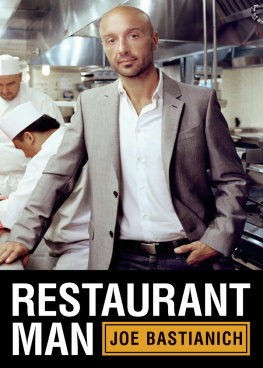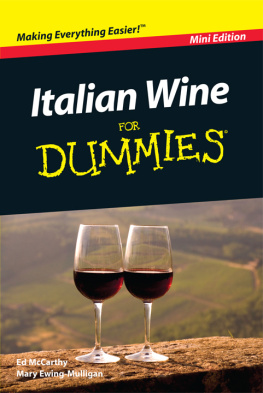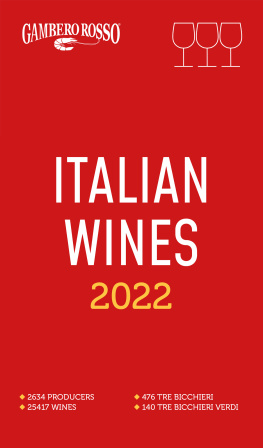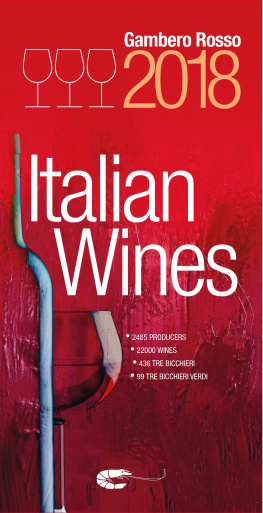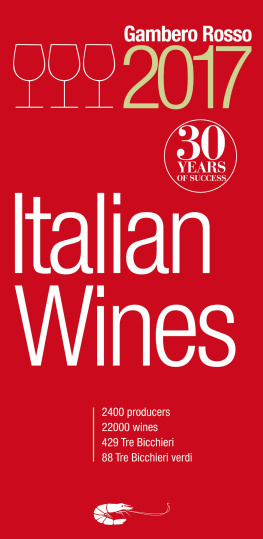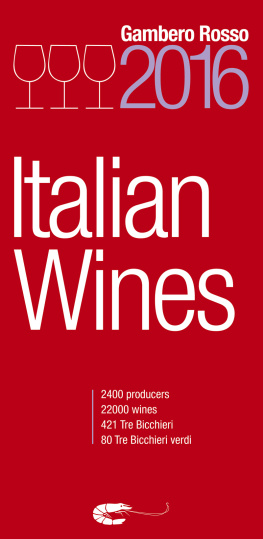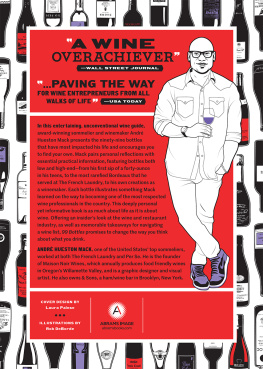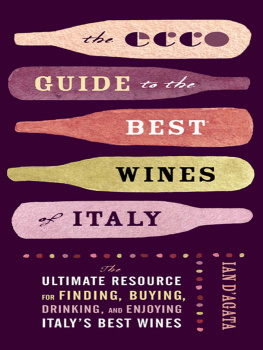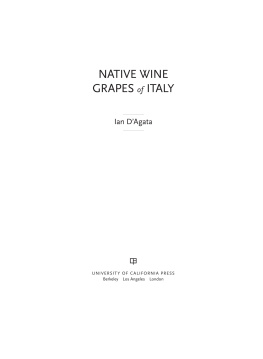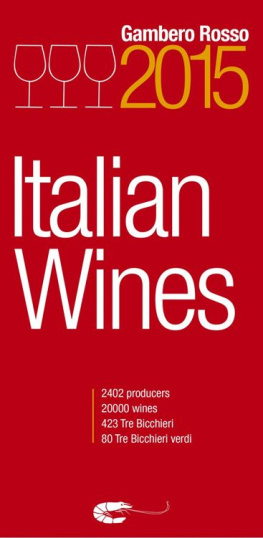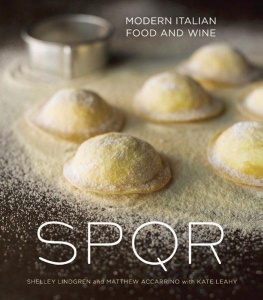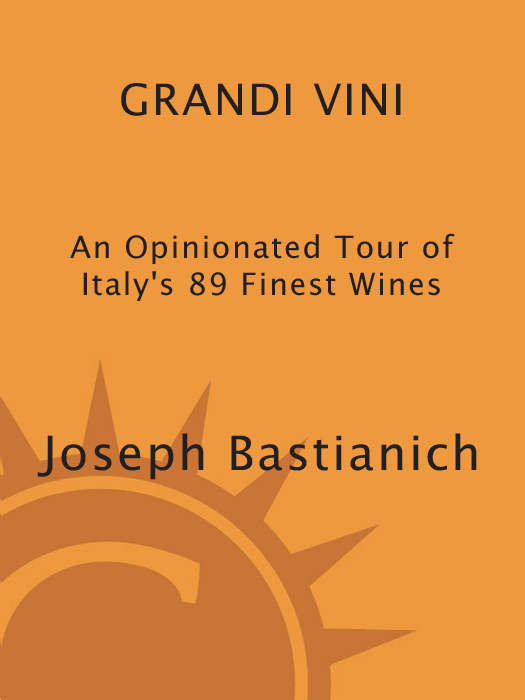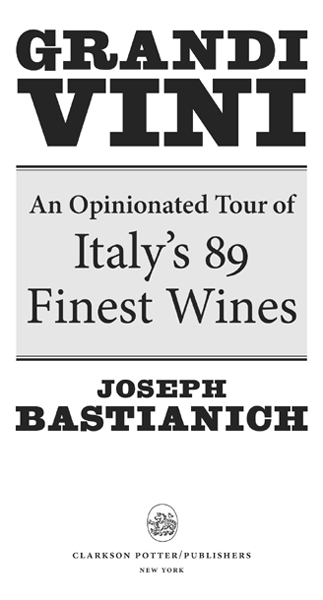Copyright 2010 by Joseph Bastianich
Maps 2010 Molly OHalloran, Inc.
All rights reserved.
Published in the United States by Clarkson Potter/Publishers, an imprint of the Crown Publishing Group, a division of Random House, Inc., New York.
www.crownpublishing.com
www.clarksonpotter.com
CLARKSON POTTER is a trademark and POTTER with colophon is a registered trademark of Random House, Inc.
Library of Congress Cataloging-in-Publication Data
Bastianich, Joseph.
Grandi vini / Joseph Bastianich. 1st ed.
p. cm.
1. Wine and wine makingItaly. I. Title.
TP559.I8B368 2010
641.220945dc22 2010008555
eISBN: 978-0-307-71976-8
v3.1
To my loving wife, Deanna, and my children, Olivia, Miles, and Ethan.
To Tiziano Gaia and Giancarlo Gariglio for their intimate understanding of every aspect of Italian wine. The spirit of our great collaboration permeates every chapter of this book.
To the great Barolo Monfortino Riserva Giacomo Conterno, the standard by which all others are measured, a wine that captures the essence expressed in this book yet remains in a class of its own.

~ CONTENTS ~
~ INTRODUCTION ~
G RANDI V INI :An Opinionated Tour of Italys 89 Finest Wines not only identifies the most unique and outstanding wines that Italy offers today but also shares everything happening behind the scenes in Italys dynamic and sometimes mysterious world of wine. This is the present-day story of wine in Italy and, in many ways, my story as well.
In the postSecond World War era, my family members were political refugees and immigrants from the war-torn region of Istria. Although they were people of the earth who produced food and wine, they were forced to leave that life behind and seek opportunities in America. Once settled, they turned back to food and wine in order to earn a living. From positions as cooks, bakers, and waiters, they became restaurant owners, their success predestining my life in food and wine.
Shortly after I was born, in 1968 (a terrible vintage in Italy), my mother, Lidia, and father, Felix, opened Buonavia, their first restaurant, in the Forest Hills neighborhood of Queens, New York. Those early days of the restaurant business were not glamorous; the media-driven frenzy that surrounds top eateries today simply did not exist then. Working in a restaurant was hard, blue-collar work that involved physical labor, lots of hours, and, ultimately, sacrifice. Buonavia wasnt a job; it was a way of life. We worked in the restaurant (all the time), we ate in the restaurant (only between services so no customers could see), we went to the restaurant after school to play and do homework; home was reserved for sleeping only. All my friends parents were doctors, lawyers, and accountants who belonged to country clubs. My friends went to camp during the summer; we worked in the restaurant.
It wasnt all bad. I always had a lot of grown-up friends as a child, mostly the restaurant employees and neighboring business owners. Sam, the bartender, was always good for a Coca-Cola and some gossip. Salvatore, the salad man (he also plated desserts), was a comrade and resource. Joey Slice owned the pizza parlor next door (one cant live exclusively on fettuccini Alfredo), and Lou owned Goldstar Liquors down the block.
The truth is, Lou Iacucci is the person who really introduced New York and America to quality Italian wines in the 1970s. Goldstar was a typical 1970s-style wine and spirits retailer: Wine specials were floor-stacked, and the windows were covered with signs announcing sales and deals on the hard stuffvodka, gin, and whiskey. While Goldstar sold everything, Lous passion was for Italian wine. Tucked in the back of the store, Lous office was crammed with samples from Italy. He would make frequent trips to Piemonte and Toscana, befriending the scene-makers in food and wine. When they in turn came to New York, Lou would reciprocate their hospitality and bring them to meet people in the business of selling Italian wine. One of the places he would always take the Italians to eat was Buonavia.
These were the beginnings of my life in Italian wine. Throughout the years there were many more restaurants and trips to Italy with my parents. Then I began to travel alone, and my passion for Italy and its wines evolved. After graduating from Boston College, I went to work on Wall Street (because that is what you did if you wanted to be successful). I barely made it through the MBA training program at Merrill Lynch and very quickly realized that the culture of office life was not for me. I needed to return to my passion: the food and wine of Italy. I quit my job, packed my bags, and headed out for a two-year viticulture odyssey through the Italian peninsula. I was a cellar rat, grape picker, waiter, cook, private driveryou name it. I met and worked with the people who embodied the very essence of Italian food and wine culture.
While working and traveling in Italy, I came to the realization that I wanted to be involved in the world of Italian food and wine for the rest of my life. That felt completely right.
Twenty years after that seminal trip to Italy, I now own twenty restaurants throughout the United States, three wineries in Italy, and several wine and food shops. Its been a busy yet extremely gratifying run. My business and personal evolution are a direct reflection of the wild popularity of Italian food and wine in this country. I feel lucky to be a conduit or interpreter of two thousand years of food and wine culture, which America is so ravenously consuming. With each new menu, wine list, or, in this case, book, I more clearly define my role not as a creator or innovator but simply as someone who distills the best of what Italy has to offer.
Choosing eighty-nine grandi vini italiani was a complex and emotional experience. I handpicked these wines not only for their absolute quality but also for what they represent in the current Italian enological landscape; each wine and its maker tells us a story. Although the wines often speak for themselves in the glass, the details of their journey from grape to bottle are likewise illuminating.
As global trends of sustainable living continue to encourage consumers interest in knowing the provenance of the food and wine that we consume, this book tells the story of every wine, establishing for the reader a personal relationship with the place, grapes, and people that create these libations. The essays reintroduce wine as an agricultural product, stripping away preconceived notions of ratings (though they are often important) and packaging, bringing wine back to its historical origins as fermented grape juice from a particular place.
The eighty-nine wines included here range from pricey international superstars to recently rediscovered ultra-regional gems. And yet each one has a unique and evocative story that teaches us not only about the wine but also allows us to enter the minds of the best winemakers in Italy today, sharing their aspirations and ambitions.
Enjoy the journey in these pages and in a glass of one of the eighty-nine grandi vini. These wines deliver the past, present, and future of Italian wine and will hopefully inspire, inform, and satiate you.


